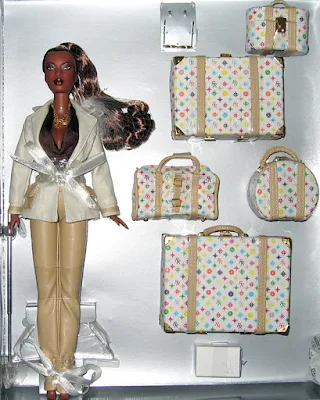Here is the newest addition to the GenX lineup from Superdoll.
This is directly from the website offering:
DALSTON DD_108
'I think I'll wear 'lipstick'.
Taking in the neighbourhood sights while strutting her stuff in Trendiest East London.
Venus knows her way around this part of town... it's home!
NEW! GENX.2 body!
NEW! Cosmetique skintone!
Her ash blonde blend double knot wig is a wonderfully styled for that summers day freshness while serving 'edge'! Eyes of sky and bluebelle surrounded by shadow of sunny yellow, sky blue and grey. Icy white liner on her lids. Brows of charcoal accentuated with fine strokes of taupe. Lips the colour of red summer roses.
Her sunshine yellow satin bra top and matching panties are, firstly to show off her waist and secondly no need to worry about just how short her skirt is! To keep her floaty, she wears lipstick print, on electric blue damask mini baloon skirt with waist pleats and concealed waistband, , just short enough to show off her long legs but classy enough to keep her cool!.
Pale sky blue hose, a pair of gorgeous metalic foiled silver lazer cut sandals with gilt platform soles , bearing red rose detail. This worn along with a cute red metalic neverfull bag, dripping in silver accessories emblazoned with gorgeous 'diamante' and metal contelation, and of course a red cutout matching buckle up waist cincher are her accessories of choice.
Just when you thought that was enough she picked up her chain and green bead with metal slats necklace and popped on her divine metal bathchain trimmed, bright red hair sticks; placed in her hair, 'just so'..
Good to go, she then added multiple hippy bracelets... just because she should!
The sun is shining outside Darlings!
Clone: 1000 Venus d'Royce
Of course she comes with the following standard accessories:
-manic_cure hands (see booklet for hand change instructions)
-booklet
-stand
In stock and ready to be delivered
Price: £252.00 (Excluding VAT at 20%)
What convinced me is her fashion: the belt on bare skin, the great neckpiece, the cute hair sticks! I love it! I like her wig, too. She looks like a keeper.
























